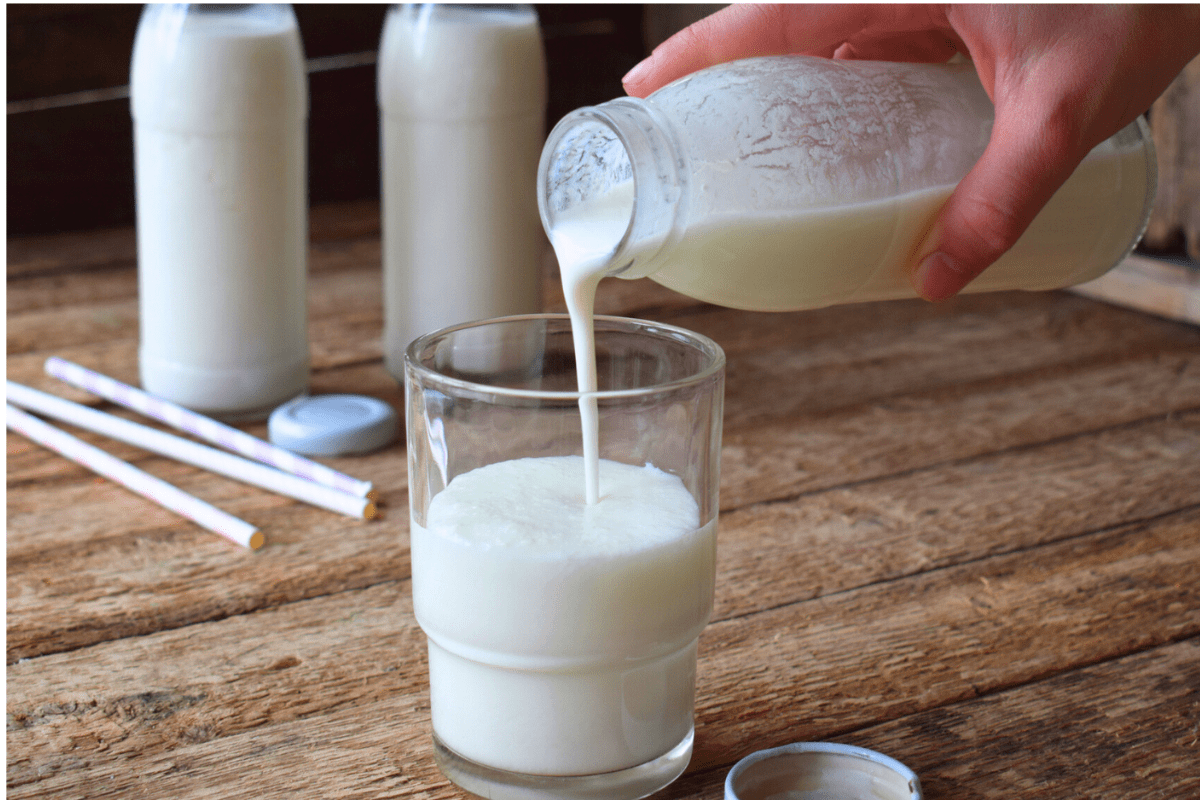As a registered dietitian, I often get asked if whole milk can be part of a healthy eating plan. My response: absolutely! There is research that shows that whole milk dairy foods like milk, cheese, and yogurt may not be linked to cardiovascular disease – plus, the 2020-2025 Dietary Guidelines for Americans (DGAs) certainly has room for you to include whole milk dairy in your daily diet. Here’s a look at the scientific studies and healthy ways you can incorporate whole milk dairy foods into your day.

The Dietary Guidelines for Americans
The 2020-2025 DGAs include dairy foods (milk, cheese, and yogurt) in its own food group. This is because the dairy group provides many essential nutrients, including high-quality protein, phosphorus, magnesium, zinc, vitamin B-12, vitamin A, riboflavin and choline, plus three nutrients under consumed by all ages (from toddlers to older adults: calcium, vitamin D, and potassium.
While the 2020-2025 DGAs recommend that low and nonfat milk and dairy primarily be chosen, the guidelines also give room for sources of saturated fat in your daily diet. It’s recommended that a maximum of 10% of total calories come from saturated fat – which means you can enjoy a serving of full fat dairy, too. In addition, Joslin Diabetes Center published its Clinical Guidelines in the June 2018 issue of The American Journal of Managed Care on Evidence-Based Diabetes Management, which allows for some flexibility in fat as long as total daily calories are kept within limits.
Whole Milk and Health
Research suggests that whole milk and dairy products can be part of a healthy, calorie-balanced eating plan. A 2018 randomized control trial examined the effects of drinking 2 cups of whole milk per day in 17 healthy adults. After three weeks, those who drank whole milk did not have any negatively impacted biomarkers of cardiovascular disease or type 2 diabetes (such as total cholesterol, LDL-cholesterol, triglycerides, insulin, and glucose) compared to those who drank fat-free milk. Moreover, those who rank whole milk had a higher HDL (“good” cholesterol) compared to those who drank fat-free milk.
Another study published in 2016 also found no difference in the risk factors for cardiovascular disease or type 2 diabetes when eating whole milk and dairy products compared to adults eating their low-fat counterparts.
Over the past 10 years, there has been observational evidence showing that dairy foods with fat may have a different effect on heart health compared to other sources of saturated fat (like the skin of the chicken). At this time, however, more research is needed to really understand the relationship.

5 Ways to Enjoy Full Fat Milk and Dairy in Your Day
When choosing a food that is higher in saturated fat, like whole milk and dairy, you want to look at the whole package. Given the fact that whole milk provides a plethora of nutrients, including three that are under consumed by Americans of all ages, it’s certainly a food that can fit into a healthy diet. Below are five simple ways to do so:
- Cereal and Milk – Enjoy your morning whole grain cereal with whole milk in the bowl or on the side.
- Salad Topper – Top your favorite green vegetable salad with an ounce or two of full fat cubed cheese like cheddar or mozzarella.
- Popsicle Snack – In a blender, combine 3/4 cup of whole milk vanilla Greek yogurt with 1½ cups of your favorite 100% fruit juice (like cranberry, pomegranate, or orange), a handful of berries, and 1 to 2 tablespoons of honey or maple syrup. Blend, pour into popsicles molds, and freeze for at least 4 hours.
- Warming Bevvie – Enjoy a hot cup of cocoa made with whole milk and topped with shaved dark chocolate.
- Ricotta Dessert – Enjoy ½ cup of whole milk ricotta drizzled with 1 teaspoon of honey and sprinkled with blueberries and chopped almonds.






